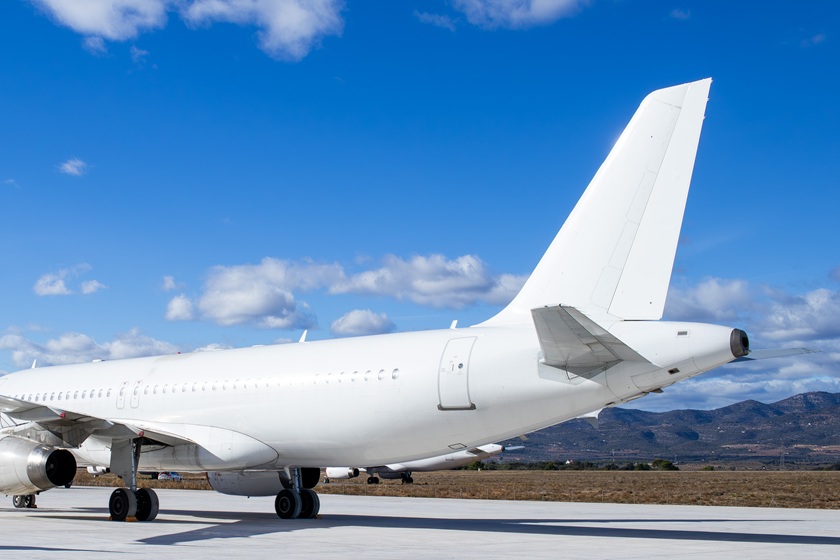Spotted a plain white aircraft? Discover the new model of aviation
 Have you ever boarded a plane that looked completely white, without any airline logo or colorful branding? If you haven't yet, you might soon. These “white tail” aircraft are appearing more often in Mexican skies, and they represent a fascinating shift in how airlines operate worldwide.
Have you ever boarded a plane that looked completely white, without any airline logo or colorful branding? If you haven't yet, you might soon. These “white tail” aircraft are appearing more often in Mexican skies, and they represent a fascinating shift in how airlines operate worldwide.
Decoding the white tail phenomenon
All-white planes aren't out of service or unfinished – they're actually part of a sophisticated aviation strategy called ACMI (Aircraft, Crew, Maintenance, and Insurance). It’s a service where an airline rents a fully-equipped airplane, along with the crew to fly it, from another airline. This arrangement allows airlines to rapidly scale up capacity during busy travel seasons and reduce it during quieter periods, avoiding the financial burden of maintaining unused aircraft.
“With ACMI, airlines can respond quickly to sudden increases in demand, explore new routes, or address unexpected disruptions,” says Jose Maria, Head of Flight Operations at the global leading ACMI operator Avion Express.
But what does ACMI have to do with white planes? While most airlines paint their aircraft in distinctive brand colors, ACMI operators often keep their planes white for maximum flexibility. This allows them to quickly move from serving one airline to another without the time and expense of constant repainting – a plane can fly for Eurowings one week and Flybondi the next, all while maintaining its neutral white appearance.
ACMI is still relatively unfamiliar in Latin America, but travelers in the region are likely to encounter these “white tail” aircraft more frequently. Mexico is experiencing growing demand for air travel, welcoming over 45 million international tourists in 2024 – a figure that has surpassed pre-pandemic levels. Domestic air travel is also on the rise, and with this increasing demand, airlines in the region are looking for flexible ways to add more flights when needed, making ACMI an attractive solution.
What does it mean for passengers and crews?
Usually, passengers don’t even notice that their flight is operated by an ACMI airline. You might see the operator’s name on the boarding pass, but the quality of service—and even the appearance of the cabin crew and pilots—is often the same. In fact, when an ACMI operator works in partnership with another airline for an extended period, the aircraft may even be painted in the partner’s livery to ensure a more seamless experience for passengers.
For pilots, ACMI flying offers a different experience compared to traditional airline operations. Unlike regular commercial flights, ACMI operations are designed to meet fluctuating market demand, which often leads to frequent changes in routes and destinations.
“As an ACMI pilot, you might find yourself based in different locations for short periods—long enough to explore beyond typical layovers, but not so long that you’re away from home indefinitely. There's a myth that ACMI flying is more seasonal than stable, but actually, it’s just more dynamic. We fly approximately the same number of flights throughout the year, just in different locations,” explains Jose Maria.
The ACMI company typically takes care of all travel and accommodation arrangements for pilots during their rotations. This includes flights, hotels, and transportation, ensuring that pilots don’t need to worry about logistics. The goal is to allow them to focus entirely on flying, while the company manages everything else.
A global career opportunity
The growing demand for flexible aviation solutions is attracting companies like Avion Express to Mexico. With 20 years of experience and operations across 17 global bases, the company is now actively recruiting 40 local pilots to join their multicultural team of 64 nationalities.
“We currently offer opportunities for Mexican pilots based in Mexico, but in the future, the possibilities are unlimited,” says Jose Maria. “Since we began the process of establishing an AOC here and already operate across all five continents—regularly adjusting our bases based on partnerships—the company is positioned to provide truly global opportunities.”
For pilots seeking adventure beyond traditional airline routes, this new wave of international aviation opens up a world of opportunities. And passengers, the next time you see or board one of those mysterious white planes, you'll know you're witnessing aviation's flexible future in action.
